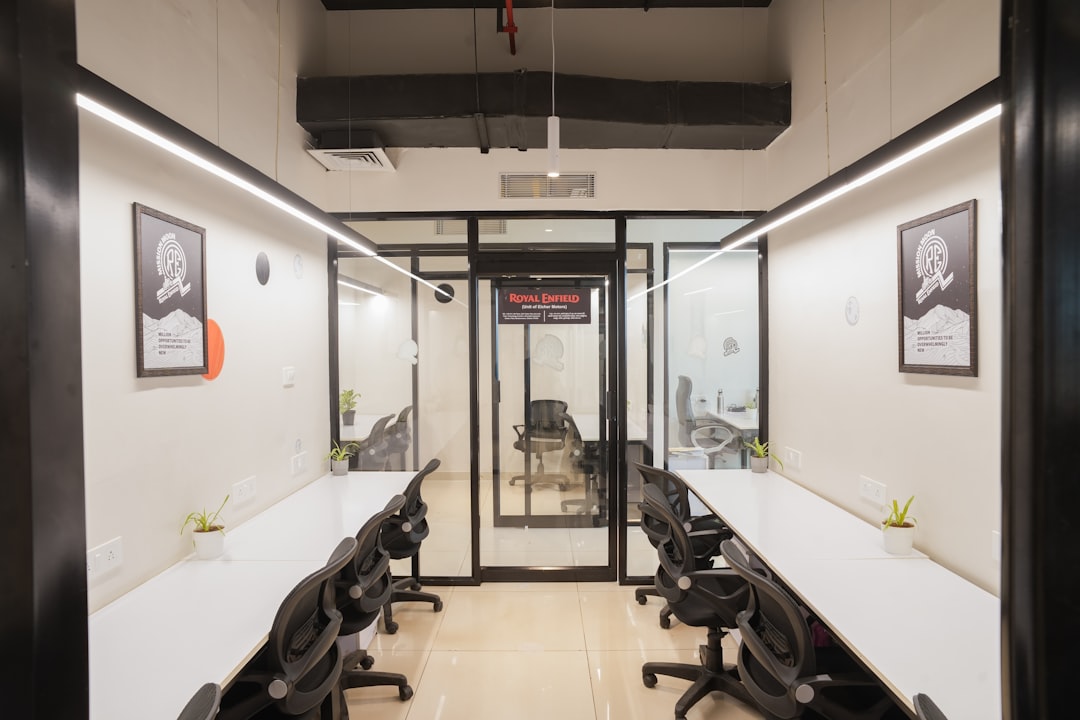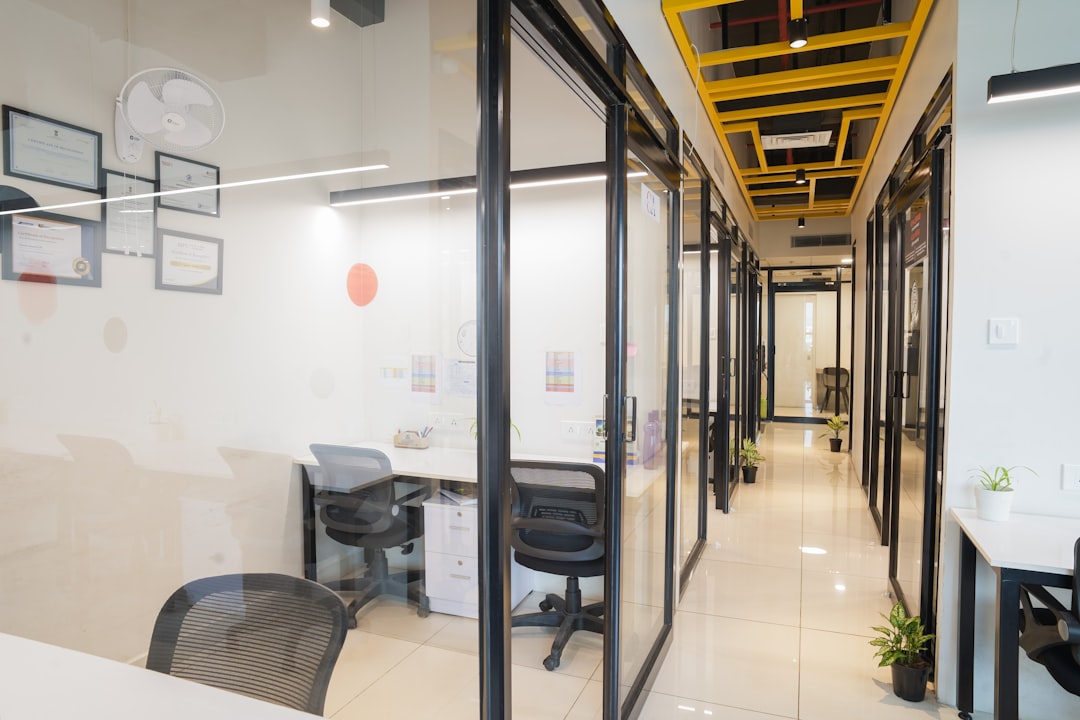

Engage prospects with a scan and streamline customer engagement with FREE QR code marketing tools by Sona – no strings attached!
Create a Free QR CodeFree consultation

No commitment

Engage prospects with a scan and streamline customer engagement with FREE QR code marketing tools by Sona – no strings attached!
Create a Free QR CodeFree consultation

No commitment
Coworking spaces are evolving rapidly, driven by the needs of increasingly mobile professionals and businesses seeking flexible, collaborative environments. As competition intensifies and members’ expectations become more sophisticated, operators face persistent challenges: fragmented member journeys, missed opportunities to engage high-value prospects, and an ongoing struggle to measure the real impact of analog efforts. Traditional touchpoints like printed brochures, static posters, and manual check-in sheets not only lose effectiveness but can also let anonymous, high-fit prospects slip through the cracks, leading to missed retention and upsell opportunities.
QR codes have emerged as an accessible bridge that seamlessly connects the physical workspace to dynamic digital experiences. For coworking operators, thoughtful use of QR code strategies eliminates friction in reservations and access, unlocks richer community interactions, and, crucially, provides measurable engagement data. This transparency exposes where members find value and highlights previously invisible intent, transforming speculation into actionable insight. For creative deployment ideas, explore these coworking-focused coworking QR ideas and coworking QR uses.
When QR codes are integrated into daily touchpoints and core operations, coworking businesses can cultivate highly personalized, data-driven journeys that improve retention, boost occupancy, and address the root causes of disengagement. Here’s how to implement these strategies to overcome key industry obstacles and create long-term member loyalty with help from the Sona QR overview.

QR codes bridge the gap between fragmented analog processes and cohesive digital engagement, which is crucial for both operations and marketing as coworking teams respond to new member behaviors. Many operators still rely on manual check-in sheets, paper visitor logs, and printed flyers that require additional steps to convert interest into action. These analog processes introduce friction and provide little to no data, making it difficult to follow up or personalize outreach.
By digitizing and tracking interactions once limited to paper sign-ins or static event boards, QR codes let operators capture intent signals as they happen and ensure every engaged visitor is mapped into their CRM or retention workflows. For strategic context on turning signals into revenue, see Sona’s intent data guide. The outcome is a cleaner member journey from first visit to recurring bookings, fewer lost opportunities, and a continuous feedback loop that guides operational decisions.
In practice, this means replacing manual appointment sheets with QR-linked booking flows, converting paper brochures into dynamic landing pages that personalize content, and shifting from untracked guest Wi-Fi access to QR-enabled onboarding that captures basic contact information with consent. Each substitution reduces friction for members and increases visibility for the operator—this guide to booking QR codes offers a practical starting point.

Coworking spaces often battle fragmented member journeys, where analog amenities fail to convert interest into actions or leave high-potential visitors untracked. Without real-time visibility into who is engaging with on-site resources, critical signals go unnoticed, leading to missed outreach and lower overall engagement. QR codes address these gaps by making every physical touchpoint a digital gateway to an action.
They also enhance speed and clarity for members who want instant access to services without downloading an app or navigating complex portals. When implemented thoughtfully, QR codes reduce operational drag and provide unified data that informs staffing, programming, and promotional strategies.
By embedding data-driven QR codes into frequently used materials like flyers, event banners, and desk signs, coworking spaces gain line of sight into member intent. This makes it possible to prioritize programs that matter and to follow up quickly on interest while it is fresh.
As coworking businesses scale, incomplete or outdated data can make it harder to personalize member experiences or adapt to changing needs. QR codes, deployed with the right format and destination, fill these gaps by enabling diverse digital actions and surfacing previously hidden account-level data. The key is to match the code type to the use case—review core QR code types to choose the right one.
Operators should prioritize formats that simplify frequent tasks, record signals of interest, and create opportunities for follow-up. Below are the formats that typically unlock the most value in coworking environments.
Dynamic QR codes, managed from a unified dashboard, allow operators to change destinations, segment by location, and test different content without swapping printed assets. This flexibility is crucial when programs evolve quickly or when operators manage multiple locations.

Member churn and untracked usage are often tied to operational blind spots: physical spaces where intent is expressed but not captured. Strategic QR placement in these zones bridges the data gap and reveals patterns that guide product, staffing, and marketing decisions.
When operators position QR codes where decisions are made, the resulting data shows which amenities are valued and which require tuning. These insights go beyond vanity metrics and drive practical improvements that members feel.
By embedding QR codes into the environments members use most, operators meet people where they work and reduce lost opportunity costs tied to anonymous or unmeasured engagement. These placements also accelerate feedback cycles, so improvements happen while interest is high.

Recurring frustrations in coworking, such as missed bookings, dropped event participation, or undetected churn signals, are often rooted in manual or disconnected processes. QR-enabled solutions put the right prompt in front of the right person at the right time, then capture the result for ongoing optimization.
As you adopt these use cases, ensure each code has a single, clear purpose and a benefit-driven call to action. Avoid crowding surfaces with multiple codes that compete for attention.
Each instance converts a friction-prone moment into a data-rich interaction. Over time, these small efficiencies compound into higher satisfaction, stronger community ties, and a more predictable pipeline of upgrades and renewals.
The risk of leads going cold or engaged members slipping through cracks increases when interactions are not tracked at the account level. Modern QR data flows let you connect scans to a specific interest or context, which becomes the foundation for precise segmentation and follow-up. This is how offline engagement turns into digital momentum.
By deploying distinct QR codes across your environment, you create a lattice of signals that map to different stages of the member journey. Each scan adds behavioral detail, improving the relevance and timing of your communication. For inspiration, browse Sona QR’s use case library.
With a platform that centralizes codes and scan data, each QR becomes a smart audience builder. You can shift from broad blasts to targeted sequences that respect member preferences and maximize ROI.
Disconnected campaigns lead to wasted spend and inconsistent experiences. QR codes provide the connective tissue, aligning physical and digital journeys around clear actions and consistent messaging. When every channel feeds the same system, you can coordinate content, track performance, and adjust quickly. For measurement strategy, see Sona’s offline attribution guide.
A multi-channel approach also respects how members prefer to engage: some scans will happen at a desk, others in a lobby, and still others off-site through direct mail or social. The flexibility of QR codes makes consistent data capture possible across all of these contexts.
A unified analytics layer means each channel reinforces the next. Coworking operators can attribute engagement accurately, understand which investments pay off, and create loyalty through relevant, data-driven interactions.
Successful QR programs require a clear plan, disciplined execution, and ongoing optimization. Start with one or two high-impact journeys, measure what matters, and expand based on results. The following steps will help you launch confidently and learn quickly.
Before you begin, determine how scan data will flow into your CRM or member management system. Clean data and consistent tagging make optimization far easier and ensure that your team trusts the insights.
Clarify the core problem and the outcome you want. For example, if event participation is inconsistent, your goal might be to shorten the RSVP process and capture interest earlier. If meeting rooms are underutilized, focus on on-the-spot booking and reminders.
Choose the code type that best fits your action. If you need to update destinations or capture analytics, dynamic codes are essential. For perennial items like a general info page, static codes can work.
Make your codes visually distinct and include a benefit-driven call to action. Test across devices, distances, and lighting conditions. Accessibility matters for scan rates, especially in busy areas.
Place codes where decisions happen and where friction exists. Tie each code to a single action. Avoid cluttering surfaces with multiple options, and keep instructions concise.
Use dashboards to understand scan-to-action flows and identify drop-off points. Adjust placement, creative, or destination content. Consider A/B tests for calls to action and landing pages.
In many coworking spaces, the lack of consolidated engagement data turns revenue attribution and campaign optimization into guesswork. QR codes, paired with modern analytics, transform anonymous scans into a coherent picture of behavior that connects to bookings, upgrades, and renewals. This makes it possible to invest in what actually drives outcomes. For a framework, compare multi-touch attribution models.
Track more than volume. The value lies in understanding who scanned, where, and what happened next. Correlating scan paths to conversions reveals which amenities, messages, and placements deserve more attention and which need rethinking.
When your analytics can connect scan data to revenue, your team gains confidence to scale what works. Over time, these insights guide staffing, amenity investments, and programming in ways that members feel day to day.
QR campaigns thrive when they are clear, measurable, and aligned with real member behavior. Start with a narrow focus and build from early wins, adjusting the program as you learn. Education is also critical, since adoption depends on both staff and members understanding the benefits of scanning.
Finally, make the follow-up as seamless as the scan. If a member takes the time to engage, a prompt, helpful response cements trust and increases the likelihood of repeat interactions.
These practices create a predictable loop of testing, learning, and scaling. The result is a cleaner member journey and a program that continually aligns with what members value.

Operators that integrate QR codes into everyday moments see compounding gains. The most successful programs connect the dots between physical engagement and digital follow-up, and they evolve based on what the data reveals. The following examples show how simple changes unlock outsized results.
Creativity helps, but clarity wins. Each example pairs a clear value proposition with a smooth digital destination. When in doubt, prioritize speed, relevance, and measurable outcomes.
Each example demonstrates that QR innovation goes beyond digitization. It addresses persistent industry pain points, reveals growth opportunities, and strengthens the feedback loops that keep communities vibrant.
Consistency and clarity are the hallmarks of high-performing QR programs. Maintain a regular cadence of review, keep calls to action benefit-driven, and remove anything that creates confusion. Small adjustments in placement, design, or copy can yield substantial results.
Avoid assuming that one well-intentioned deployment will be self-explanatory. Staff coaching, simple instructions, and visible benefits are essential to drive ongoing use.
QR codes have become essential for coworking spaces that want to connect every physical touchpoint to dynamic, actionable data. By turning static zones into interactive experiences, operators resolve long-running frustrations such as untracked high-value prospects, missed churn signals, and generic campaigns that fail to move the needle. For broader measurement alignment, read Sona’s take on marketing influence.
Whether you are simplifying resource reservations, surfacing previously hidden intent, or automating multi-channel follow-up, QR strategies create opportunities for deeper personalization, faster onboarding, and more effective retention. A strong framework, backed by real-time analytics and integrated data flows, enables coworking spaces to move beyond guesswork to a proven, data-driven model of community growth and operational excellence.
To get started, select a high-traffic area or critical journey for your next QR deployment. Track outcomes, iterate quickly, and scale what works. Addressing key pain points with a digital-first approach can unlock new levels of engagement and measurable success for your workspace. Start creating QR codes for free.
QR codes have revolutionized coworking spaces by transforming member engagement into measurable, actionable growth opportunities. Whether it’s streamlining onboarding, enhancing community interactions, or simplifying access to amenities, QR codes replace outdated manual steps with instant, mobile-friendly solutions that deepen member loyalty and boost retention. Imagine effortlessly tracking which touchpoints foster the strongest connections and being able to optimize those experiences in real time.
With Sona QR, creating dynamic, trackable QR codes is fast and flexible—update campaigns instantly without reprinting and link every scan directly to member insights and revenue growth. This means you can personalize offers, gather feedback, and drive repeat visits with precision and ease. Start for free with Sona QR today and turn every scan into a stronger, more engaged coworking community.
QR codes connect physical spaces to digital experiences by simplifying reservations and access, enhancing community interactions, and providing measurable engagement data that helps personalize member journeys and increase retention.
Best practices include deploying QR codes at key touchpoints, tracking retention-focused metrics, using clear calls to action, analyzing interaction quality beyond scan counts, centralizing QR creation and data, and continuously monitoring and optimizing QR campaigns.
Technology like dynamic QR codes can digitize manual processes such as check-ins, bookings, and feedback collection, reduce friction for members, capture real-time data for operational decisions, and integrate with CRM systems for automated follow-up and personalized engagement.
Effective strategies include integrating QR codes into print materials, social campaigns, direct mail, digital displays, and events to create seamless offline-to-online journeys, enabling targeted segmentation, real-time analytics, and coordinated multi-channel messaging.
Creating a safe and productive environment involves using QR codes to manage secure access like Wi-Fi onboarding, monitor resource usage, collect real-time feedback, reduce manual friction points, and gather data that informs staffing and amenity improvements.
Use Sona QR's trackable codes to improve customer acquisition and engagement today.
Create Your FREE Trackable QR Code in SecondsJoin results-focused teams combining Sona Platform automation with advanced Google Ads strategies to scale lead generation

Connect your existing CRM

Free Account Enrichment

No setup fees
No commitment required

Free consultation

Get a custom Google Ads roadmap for your business






Launch campaigns that generate qualified leads in 30 days or less.
